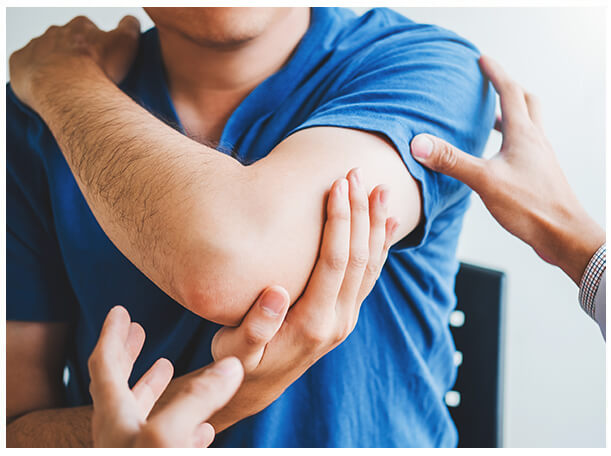Some people joke around when they describe what they think is a silly behavior as “your OCD coming out.” When you like things very neat and organized, you might make a joke about having OCD. But what is obsessive-compulsive disorder? When does it go from liking organization or repeating tasks to an actual mental disorder? You might be surprised to know that some research indicates obsessive-compulsive disorder is as much a set of physical changes as mental.
What is Obsession in OCD?
As you might’ve guessed, there are two elements to being obsessive-compulsive. The first is obsessions. This is when a person has repeatedly occurring thoughts that are not logical or rational and are upsetting to the person experiencing them. The affected person may do their best to put those thoughts aside, but they just keep intruding. The person does not want to have the thoughts and, in most cases, realizes that they are irrational. They may also feel fear when experiencing intrusive thoughts because they seem like they are out of their control. If intrusive thoughts are interfering with the daily activities of life, that’s an important criterion for obsessive thought.
These obsessions could be as simple as someone who always has recurring fears that they forgot to turn off the stove or lock the front door, or they could be as serious as thoughts of harming themselves or someone else. Common obsessions include:
- Fear of contamination such as with body fluids, household chemicals, or dirt
- Intrusive sexual thoughts
- Fear of losing control and hurting yourself or others
- Fear of yelling out obscenities or acting inappropriate in a social setting
- Religious extremism or the fear of violating one’s beliefs
- Superstitions
- Perfectionism
- Hoarding
What is a Compulsion?
Compulsions are the physical acts that people carry out to relieve their obsessive thoughts. They may not be acting on those thoughts directly, such as hurting others, but they are compelled to counteract the thoughts in ways that may not even make any logical sense but the person feels compelled to do them anyway. They feel like they have no choice and can’t control the need to perform these tasks.
When people think of compulsions or compulsive disorders, they often think of the person who is a bit of a germaphobe. They compulsively wash their hands frequently or keep their house meticulously clean. Common compulsions include:
- Excessively showering
- Cleaning rooms repeatedly and in excess
- Praying many times a day
- Counting while performing a task
- Arranging things in a particular order
- Checking many times for a mistake on one task
- Repeating routine activities or body movements
- Having a certain number of times a task must be repeated
When Does OCD Form and Why?
Obsessive-compulsive disorder can start at any age but two age groups are predisposed to developing the condition: children between the ages of 8 and 12, and in the late teen years to early adulthood. While you may think of OCD as a mental illness, its roots can go back to certain physical changes in how the brain operates that may trigger the condition. It can be related to areas of the brain that may not respond to serotonin, and there is a direct correlation to genetics. If someone in your family has this disorder, it’s estimated there is a 25% chance that another immediate family member has OCD as well. According to the odds, if you have someone in your family with OCD and if you have a family greater than four members, chances are there is someone else who will develop the condition.
To be diagnosed with obsessive-compulsive disorder requires a doctor or mental healthcare practitioner. As with most mental illness diagnoses, a thorough physical exam should be completed first to rule out other causes. You can have an obsession, a compulsion, or both to be diagnosed as OCD.
How is OCD Treated?
Most people with obsessive-compulsive disorder are treated with a combination of medications and psychotherapy. For medications, they might be prescribed an antidepressant that’s a selective serotonin reuptake inhibitor (SSRI) to help manage OCD symptoms. Psychotherapy may include cognitive-behavioral therapy (CBT) or a specific type of CBT known as exposure and response therapy (ERT.) These forms of therapy can be done in an outpatient setting and are most effective combined with medication. The two combined are considered the first line of treatment for OCD. While there is no cure for OCD, the condition can be managed and its symptoms relieved.
While people joke about being obsessive-compulsive or having OCD, it’s a real mental health condition that is not a laughing matter for those living with obsessive-compulsive disorder. OCD disrupts the lives of those who are suffering from it and can have serious consequences beyond the stereotype of a person with OCD loving cleanliness and order. OCD can’t be cured, but the symptoms can be managed with proper therapy and medications. Here at Everlast Recovery Center, we not only help with substance abuse disorders but mental health issues and disorders, as well. At our beautiful facility in Riverside, CA, we offer not only professional therapeutic modalities to address issues with mental health and substance abuse, but also a variety of activities designed to help you learn to cope with stress and anxiety once you return home. From yoga to equine therapy, you can get the help you need here and continue to get support through our aftercare program. Call us today at (866) 338-6925.





